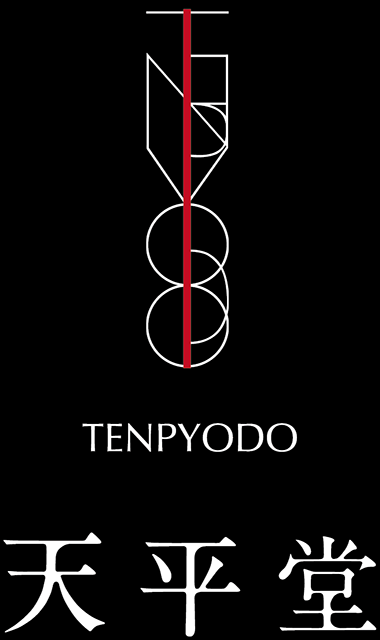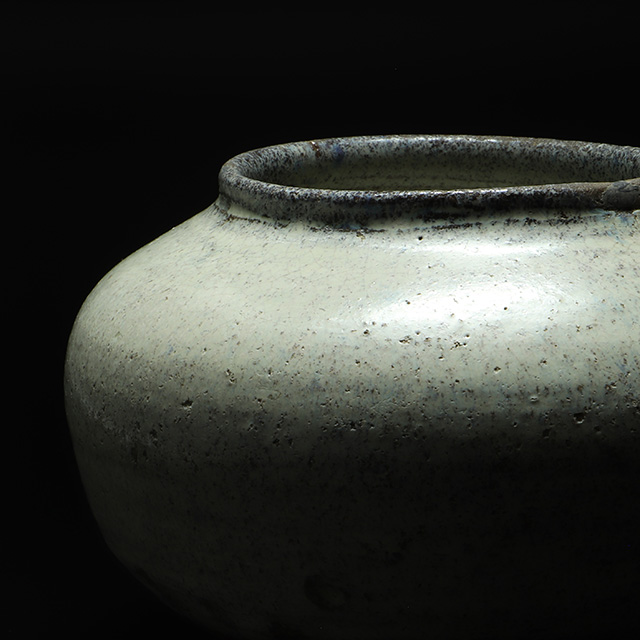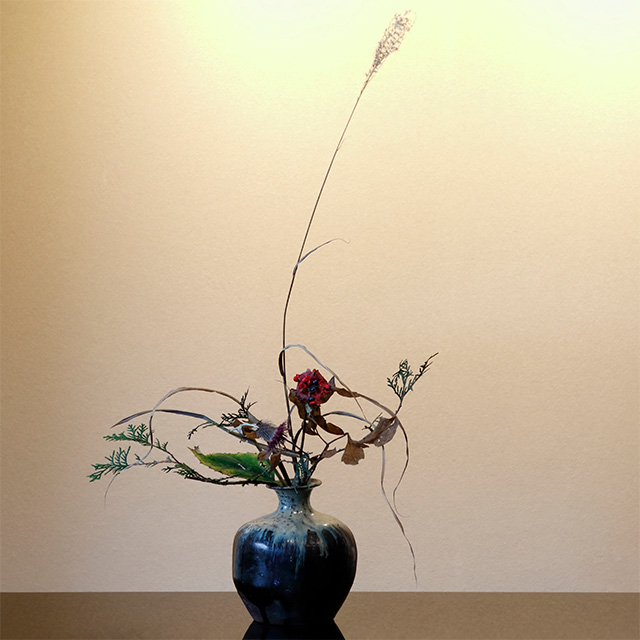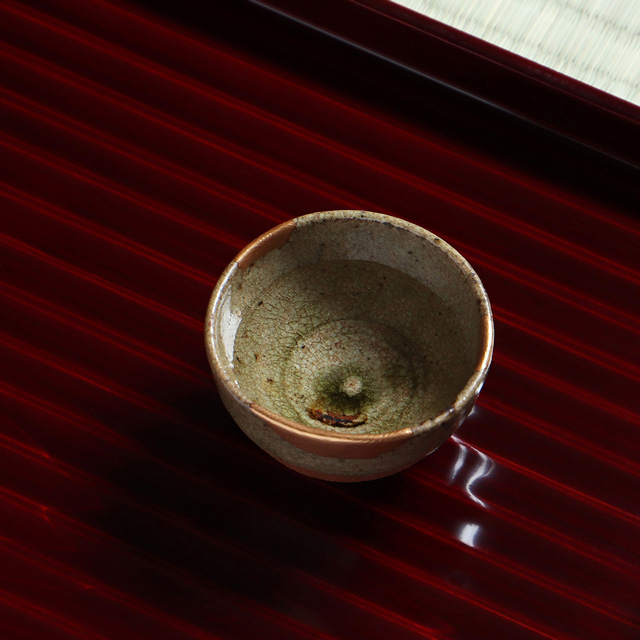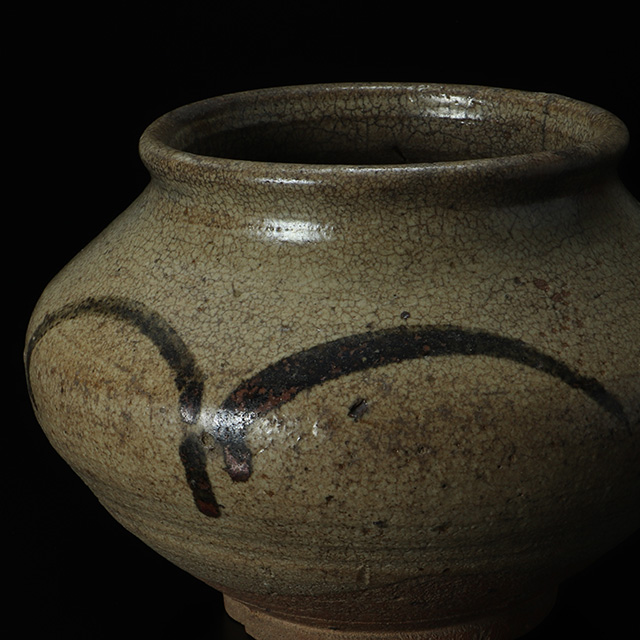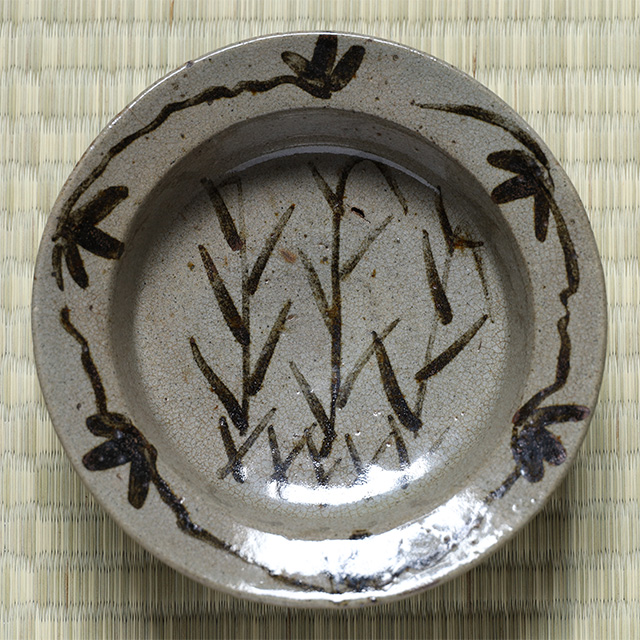Ko-Karatsu
古唐津

https://tenpyodo.com/en/product1/cat/japanease-en/(Fine Arts ⇒ Japanese Antique)
Ko-Karatsu
Karatsu ware refers to ceramics fired in the Hizen region, centered around the Karatsu Domain of Hizen Province. Its name derives from Karatsu Port, from which these wares were shipped. Highly esteemed as tea ceramics, Karatsu ware has long been cherished by tea practitioners, famously ranked as “First Raku, Second Hagi, Third Karatsu”. Its origins trace back to the late 16th century in the Kitahata area of present-day Karatsu City, Saga Prefecture. It is said that Hata Chikashi, Mikawa-no-kami, lord of Kishidake Castle, invited Korean potters to establish kilns. The castle town of Kishidake still bears traces of these early kiln sites, marking the foundational period of Karatsu ware. In 1593 (Bunroku 2), the Hata clan was dispossessed by Toyotomi Hideyoshi, leading to the dispersal of Kishidake potters across Hizen—a disruption known as the “Kishidake Collapse”. Subsequently, Terazawa Hirotaka, Shima-no-kami entered the domain, establishing the Karatsu Domain. This upheaval and the closure of kilns provide compelling evidence that Karatsu ware was already being produced prior to 1593, likely during the Tenshō era (1573–92). The arrival of Korean potters during the Bunroku and Keichō campaigns (1592–98) brought advanced techniques that ushered in a flourishing period for Karatsu ware from the Momoyama into the early Edo periods. During Hideyoshi’s encampment at Nagoya Castle, the tea master Furuta Oribe is said to have stayed for approximately a year and a half from 1592 (Bunroku 1), directly advising various Karatsu kilns. The chambered climbing kiln (renbō-shiki noborigama), too, was transmitted from Karatsu to Mino, where it was constructed at the Kujiri Motoyashiki site. The introduction of Korean ceramic techniques had a profound and lasting impact on Japanese kiln culture. The name “Karatsu ware” first appeared in the 1602 (Keichō 7) record of Oribe’s tea gatherings, listed as “Karatsu ware dish,” and is frequently mentioned throughout the Keichō era (1596–1615). By the middle 17th century, the term “Ko-Karatsu (Old Karatsu)” had emerged, indicating that its historical value was already being recognized. While much of Karatsu ware was produced in quantity for everyday use, the rise of powdered tea preparation during the Momoyama and early Edo periods brought these wares to the attention of tea masters, who began to select them as tea ceramics. Some works were even commissioned by tea practitioners, and their rarity has earned them high acclaim. In the 17th century, the discovery of Izumiyama porcelain stone and the successful firing of porcelain by the immigrant potter Yi Sam-pyeong (Japanese name: Kanagae Sanbei) marked a turning point for Karatsu ware. The rise of Imari ware led to its decline. Although distinctive styles such as Mishima Karatsu and Nisai Karatsu emerged in the early Edo period, they could not match the allure of Ko-Karatsu. Thereafter, only the official kilns (Goyōgama), such as the “tea bowl kiln,” remained in limited operation. In the early Shōwa period, researchers including Kanehara Tōhen (1897-1951), Mizumachi Wasaburō (1890-1979), and Furutachi Kuichi (1874-1949) advanced the study of Ko-Karatsu. Their excavations across the Hizen region uncovered tens of thousands of ceramic shards from ancient kiln sites.

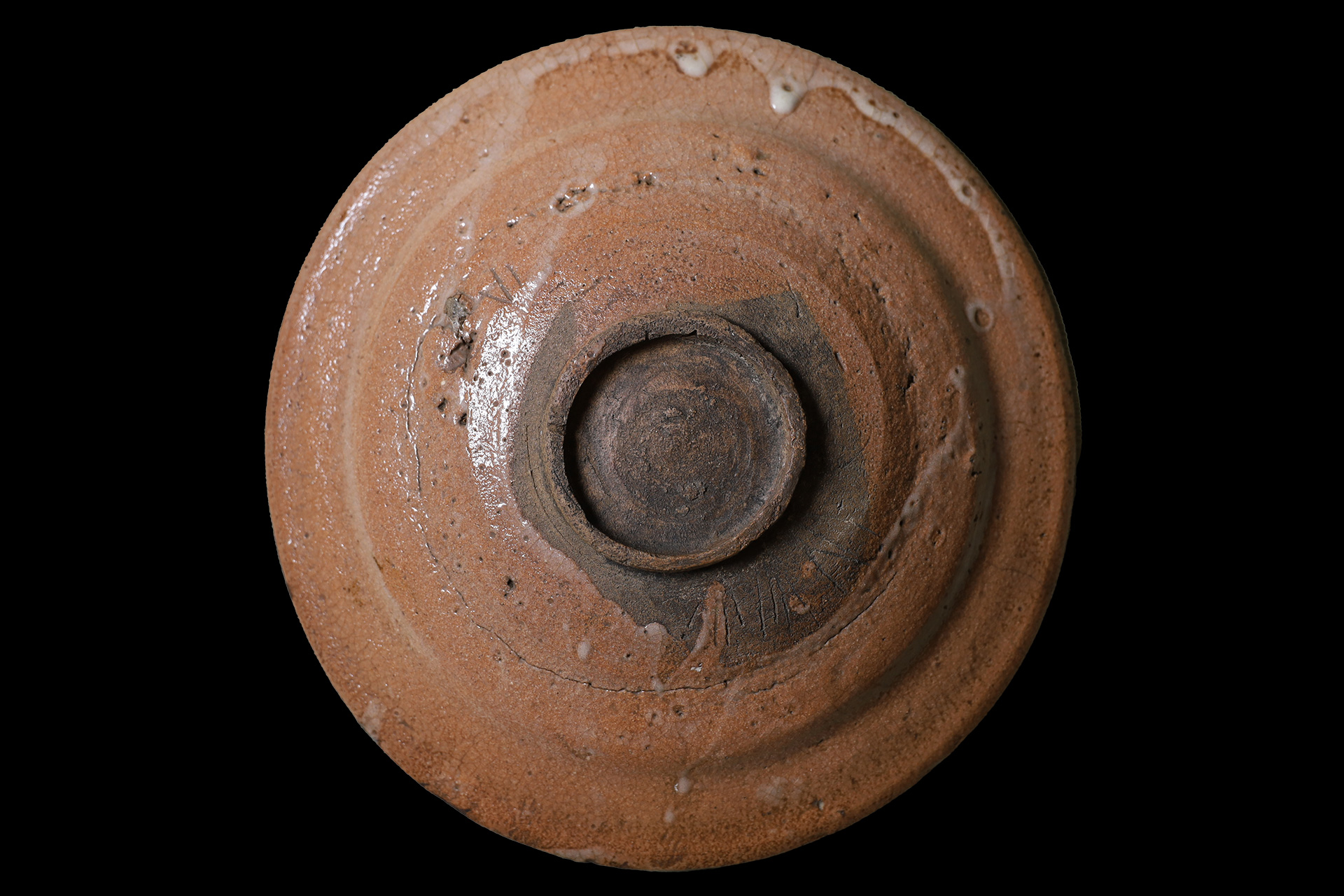
Eighty Percent Crafted by the Artisan, Twenty Percent Completed by the User
Ko-Karatsu gradually absorbs tea stains and moisture, deepening its scenery and nurturing a gentle, moist elegance. As the saying goes, “Eighty percent crafted by the artisan, twenty percent completed by the user,” the true charm of Ko-Karatsu lies in its maturity through use, allowing one to savor the vessel’s evolving journey. Especially in pieces with a softer firing, where the glaze has not fully melted, this tendency becomes even more pronounced, and features such as rain marks enhance the vessel’s presence with distinctive character.
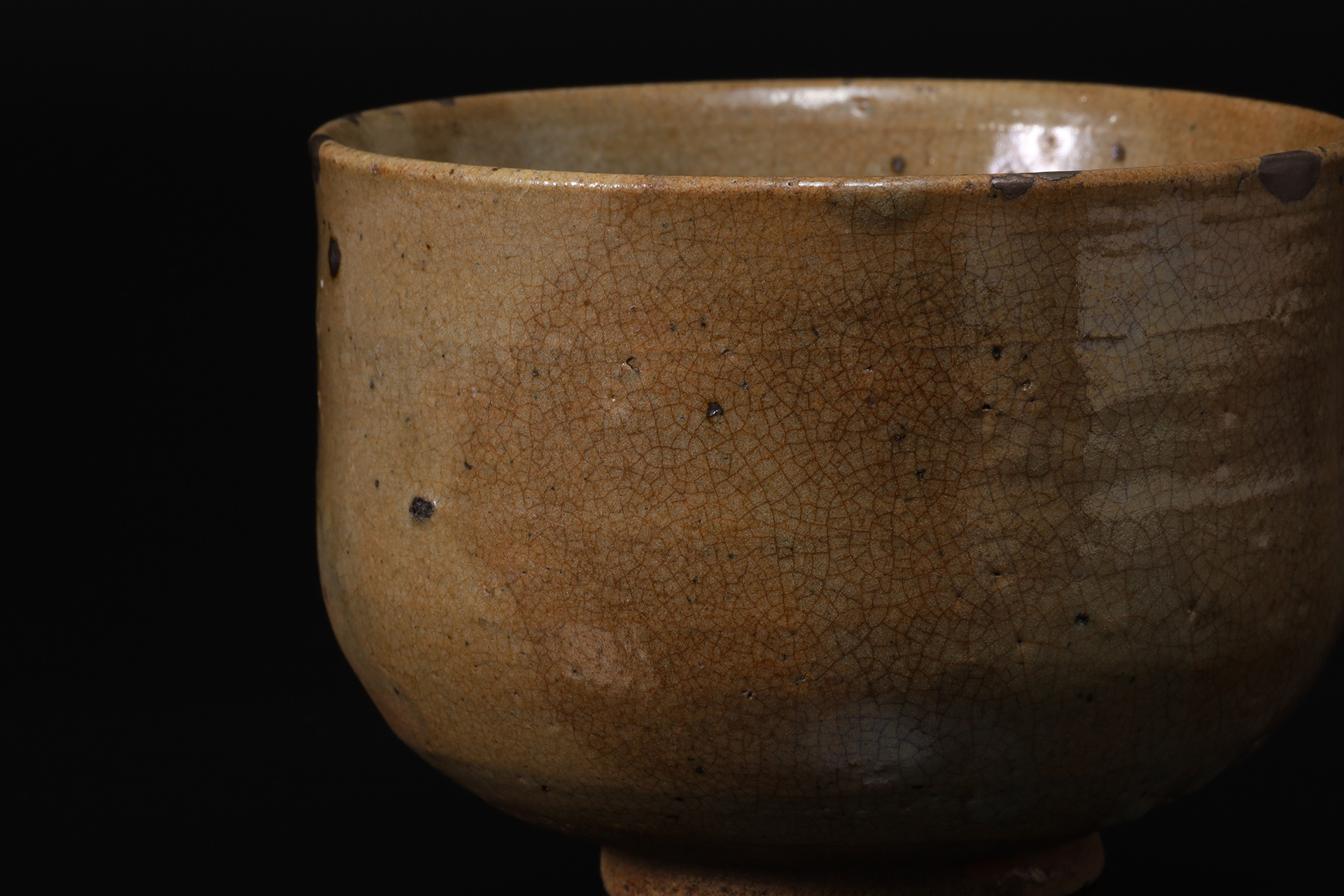
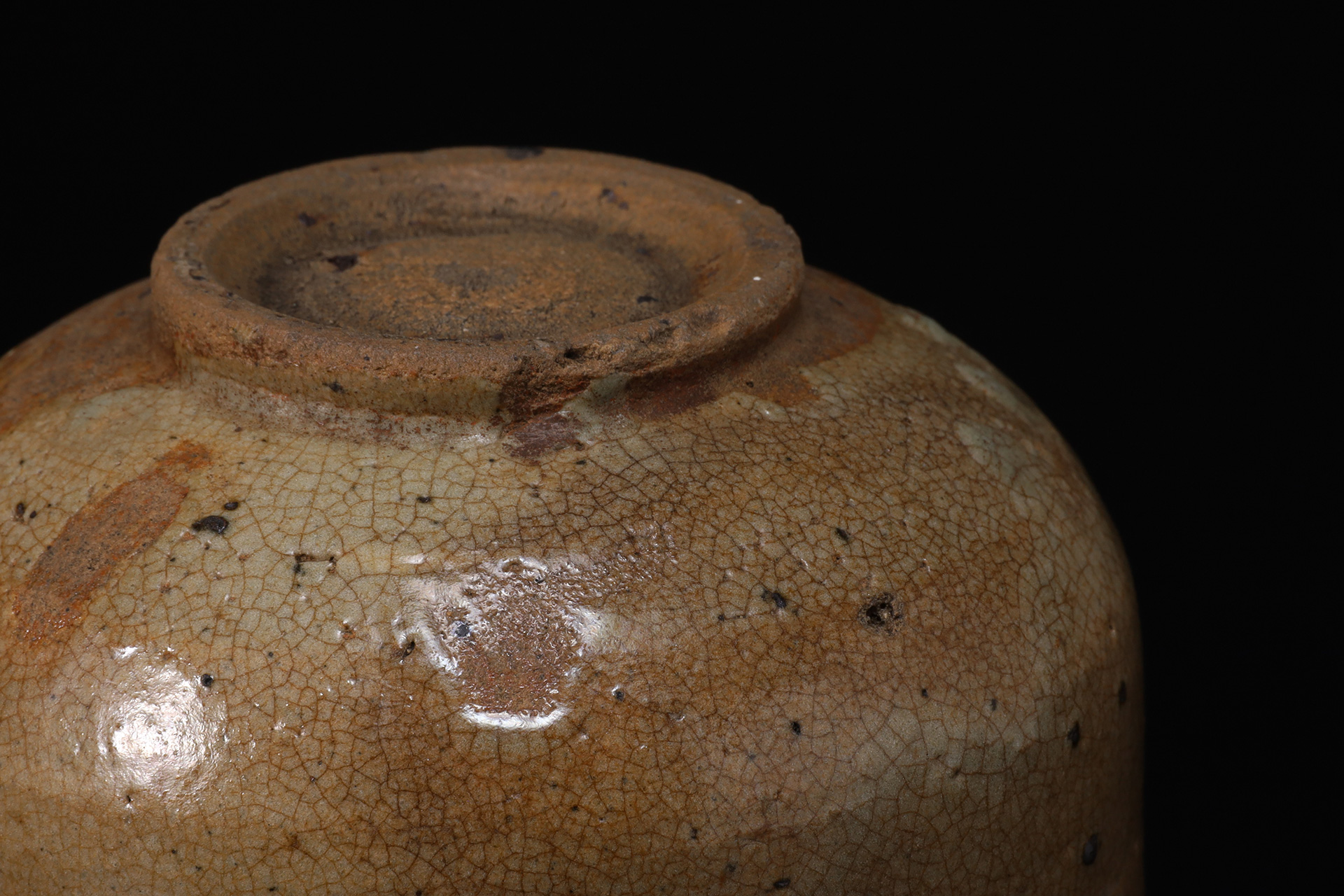
奥高麗
奥高麗は古唐津の一種で最も声価が高い大振りの茶碗であり、
井戸茶碗に並ぶとまで評されています。
高麗(朝鮮半島)の奥で焼成された物、高麗の奥から渡ってきた陶工が焼成した物等、
名称については様々な諸説がありますが、
高麗茶碗に似たところから名付けられたとするのが穏当です。
「奥高麗」という名称は江戸中期以前の茶会記には確認する事ができません。
雑器からの転用とは考え難いという見解もあり、
熊川や井戸等の高麗茶碗を手本に茶碗として焼成された物と推測されています。
市ノ瀬高麗神窯、甕屋の谷窯、道園窯、藤の川内窯、阿房谷窯、焼山窯、椎の峰窯、
川古窯の谷新窯、大草野窯、葭の元窯等で焼成されたと考えられています。
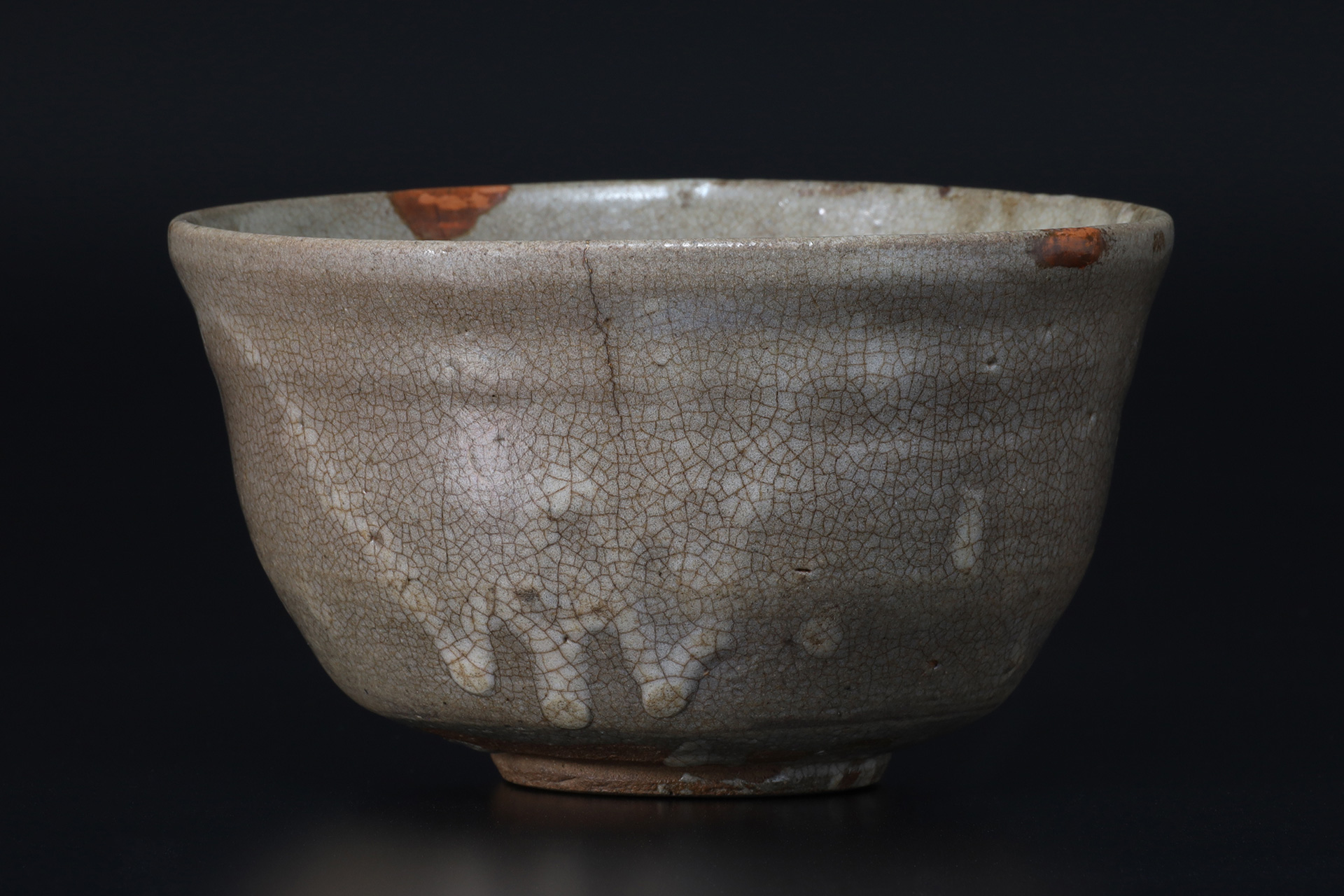
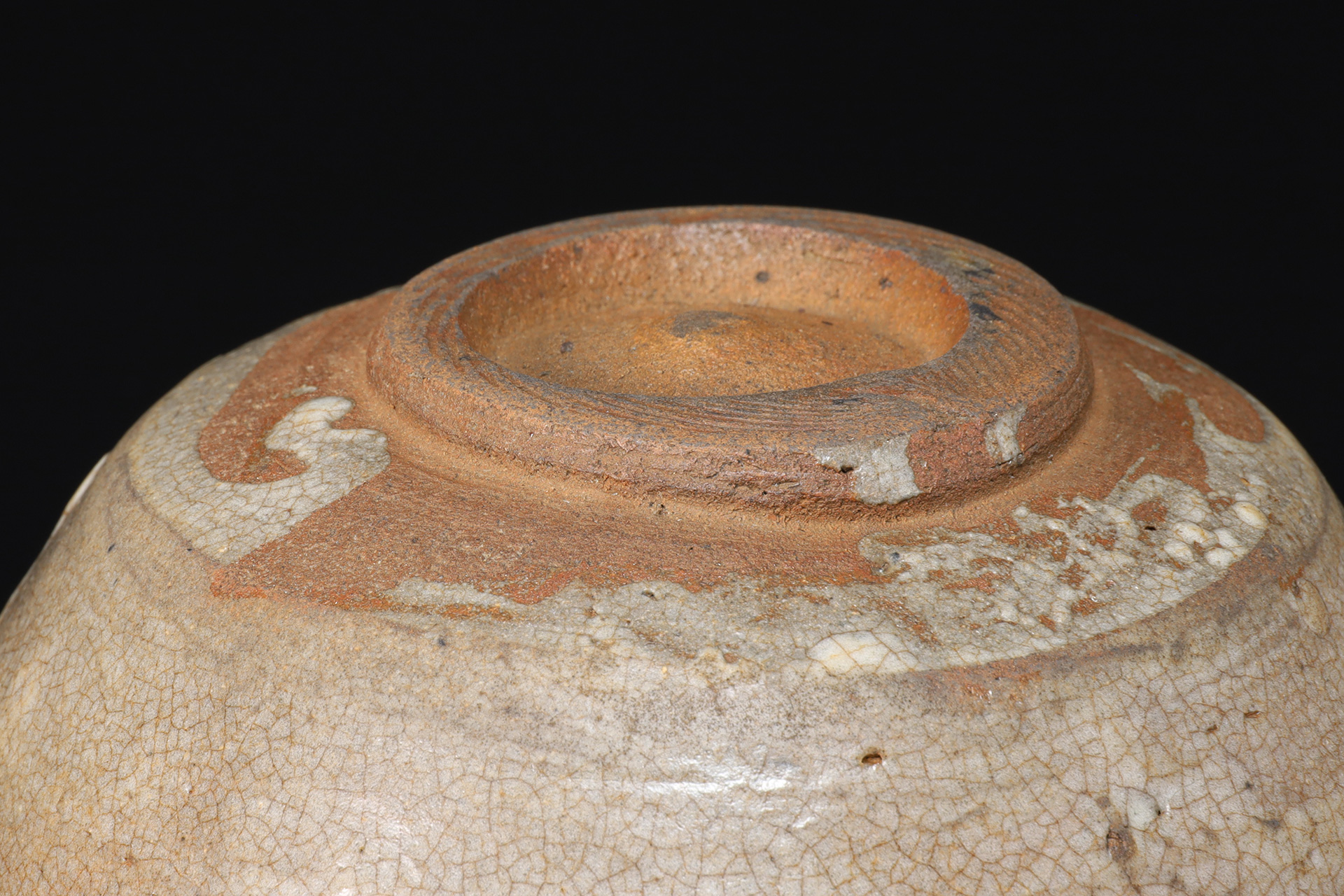
斑唐津
斑唐津とは失透性の藁灰釉が施された唐津焼です。
白濁した釉薬が変化に富んだ斑状になり、
古唐津の中でも最も古い岸岳系の窯で多用された技法として知られています。
還元焼成では乳白色の中に青みが差した物も見られ、
酸化焼成では黄ばんだ風合いとなります。
酒を注ぐと見込みが美しく映え、
中でも「斑唐津の筒盃」は酒盃の王者に相応しい貫禄を示しています。
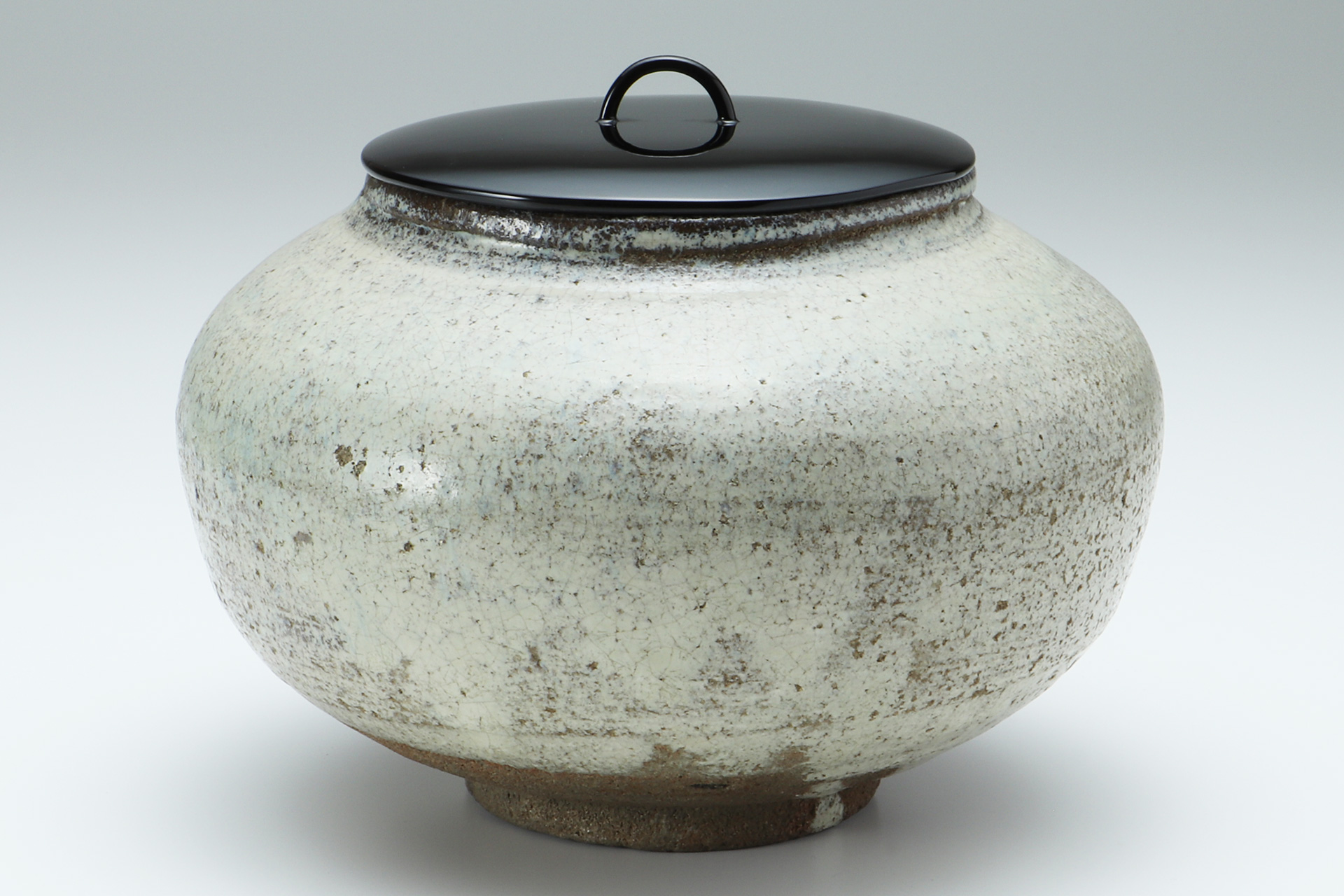

瀬戸唐津
瀬戸唐津とは長石釉が施された瀬戸風の古唐津です。
高麗茶碗の影響下に茶陶として生まれた事を示す雅味に富んだ作品が多く、「本手」と「皮鯨手」の二種に分類されます。
本手は砂気の多い白土に縮緬皺が出て、
灰白色や枇杷色を呈した長石釉に粗めの貫入が不規則に入り、豪快な梅花皮も見られます。
青井戸、蕎麦、熊川、呉器等の形があり、見込みの鏡に3~4つの目跡が残ります。
飯洞甕、帆柱、道納屋谷窯等から類似した陶片が出土しており、
阿房谷、道園、椎の峰窯等においても焼成されたと推測されています。
抹茶碗だけでなく、長崎県各所の消費地から瀬戸唐津の陶片が確認されており、
小碗、小鉢、皿等もあり、黒い油染みが残った灯明皿として使用された作例もあります。
皮鯨手は蕎麦形の本手瀬戸唐津を写したとされる平茶碗で、
鉄釉が施された口縁が鯨の皮身のように見える事によります。
見込みの鏡に3つの目跡が残り、高台内に兜布が見られます。
圧倒的に数が少ない事からも茶陶としての小規模生産だったと推測されます。
この二種は窯も時代も異なるものと推定され、茶家の間では本手の方が古いと伝えられます。
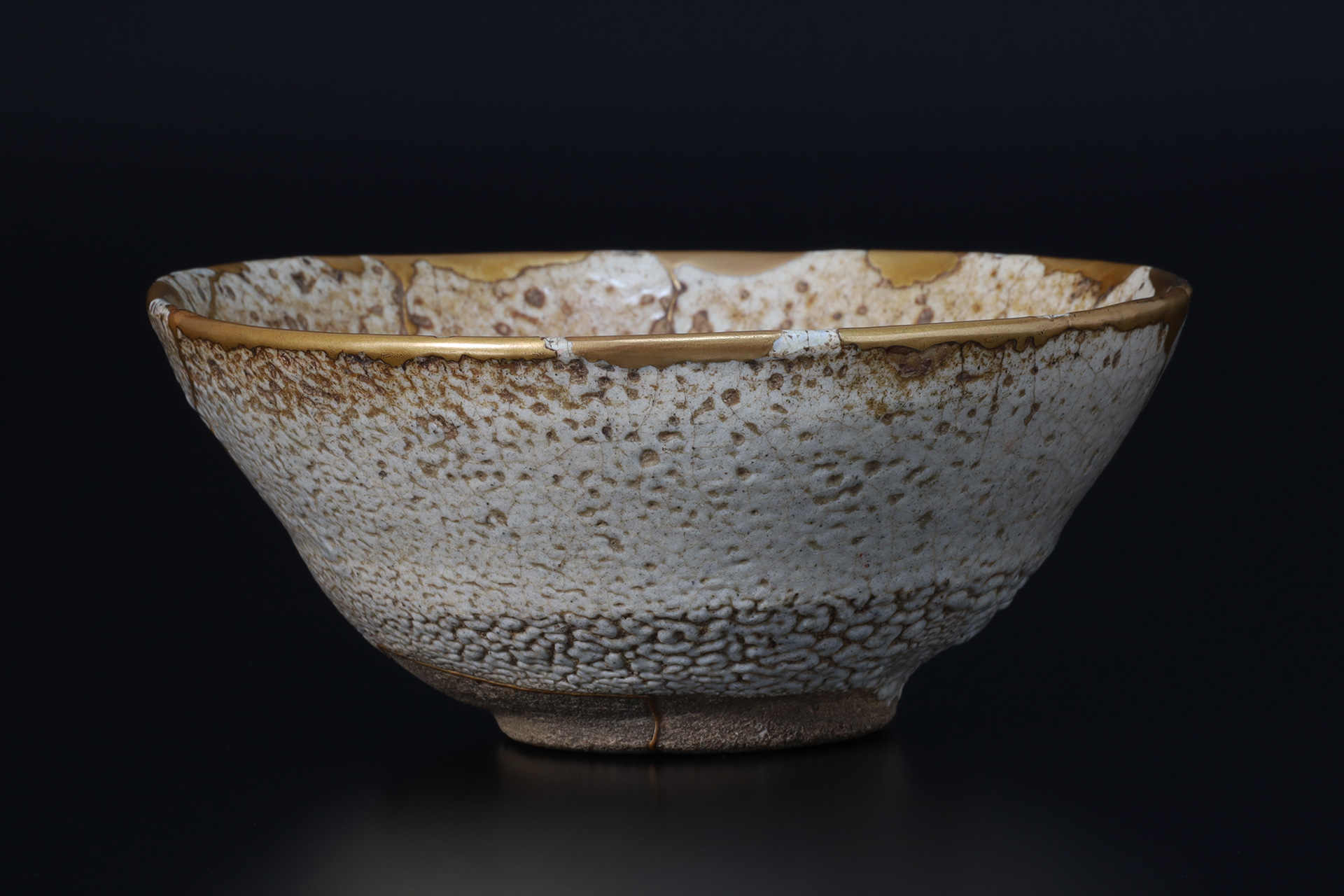
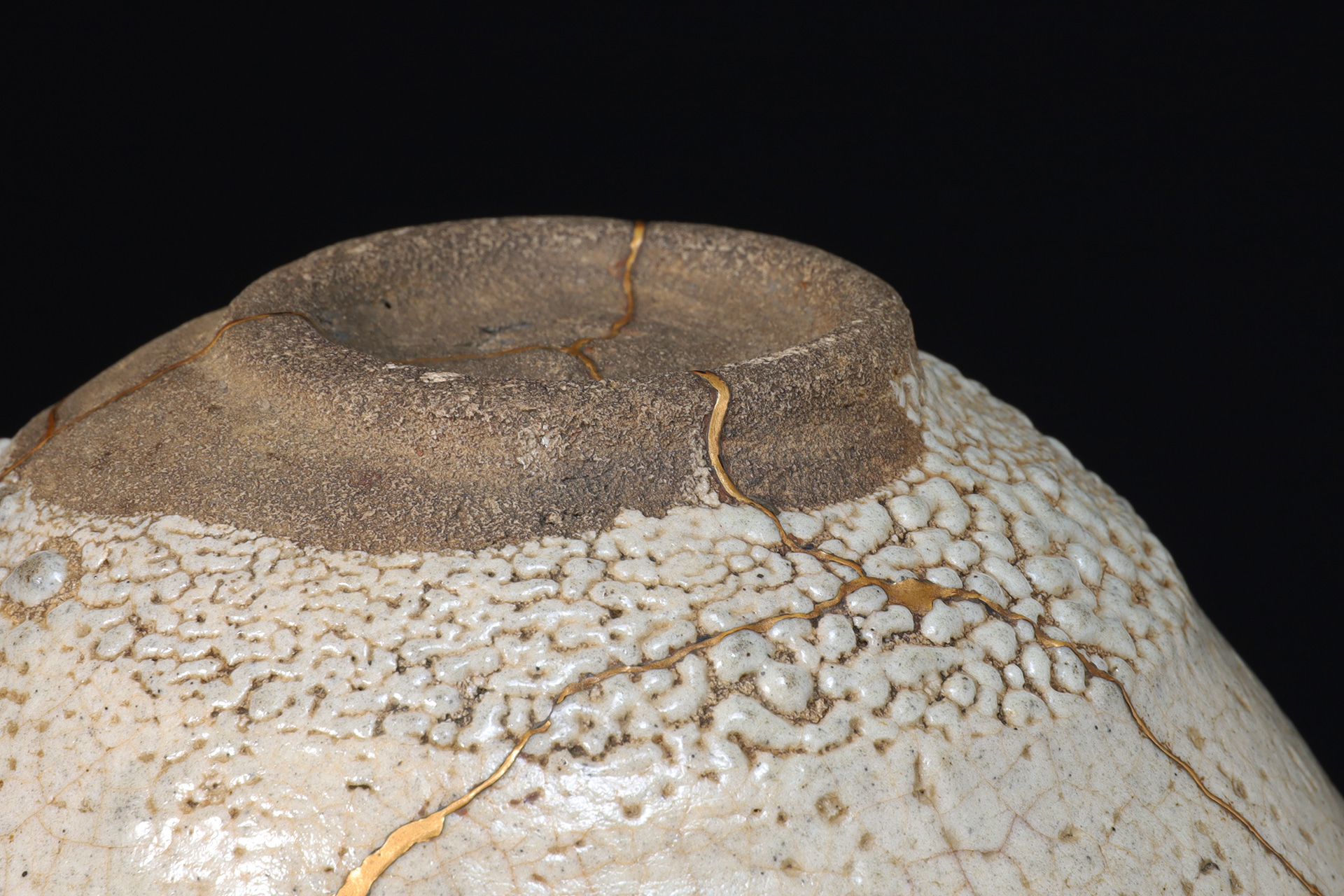
Chosen-Garatsu
Chosen-garatsu is a type of karatsu ware that combines an iron glaze with a devitrifying straw ash glaze. The area where the iron glaze and straw ash glaze blend together creates an exquisite sea cucumber glaze, which continues to fascinate many collectors and japanese tea masters. Due to the clay’s high iron content, the base takes on a deep reddish brown color when fired in an oxidizing flame. Generally, three dimensional objects are made by placing a disk of clay as the base and then forming clay strings into rings(coils) and stacking them on top of each other in layers. Once it has reached the appropriate height, a backing board is placed inside and the outside is evenly struck up and down, left and right with a racket shaped hammer, stretching it out. This causes the rings to adhere tightly to each other, making the vessel wall thin and bulging, resulting in a light and strong vessel. The engravings, such as diagonal line design, lattice design, and blue ocean wave design, are a device to prevent the board from sticking to the base, and while they shape the vessel, they also create a kind of secondary decoration inside. Finally, the edge is smoothed on a potter’s wheel and the bottom is carved to finish it off. Some works are made without hammering, simply smoothing the surface on a potter’s wheel, but these works are heavy. The bottom is marked with shell marks or covered with rice husks to prevent sticking. The matsuura style old-karatsu fujinokawachi kiln(kayanotani kiln) is known as the most famous kiln.
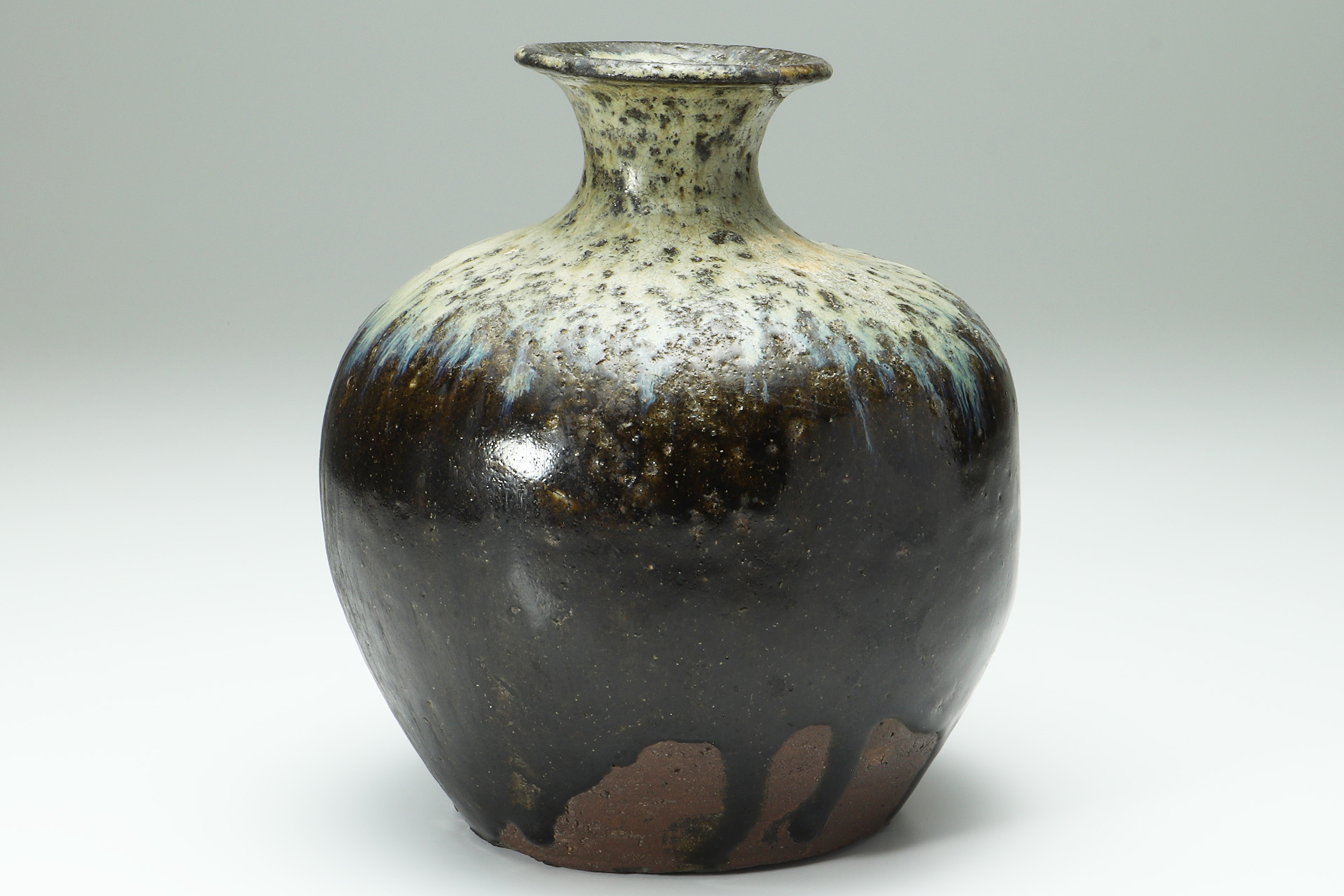
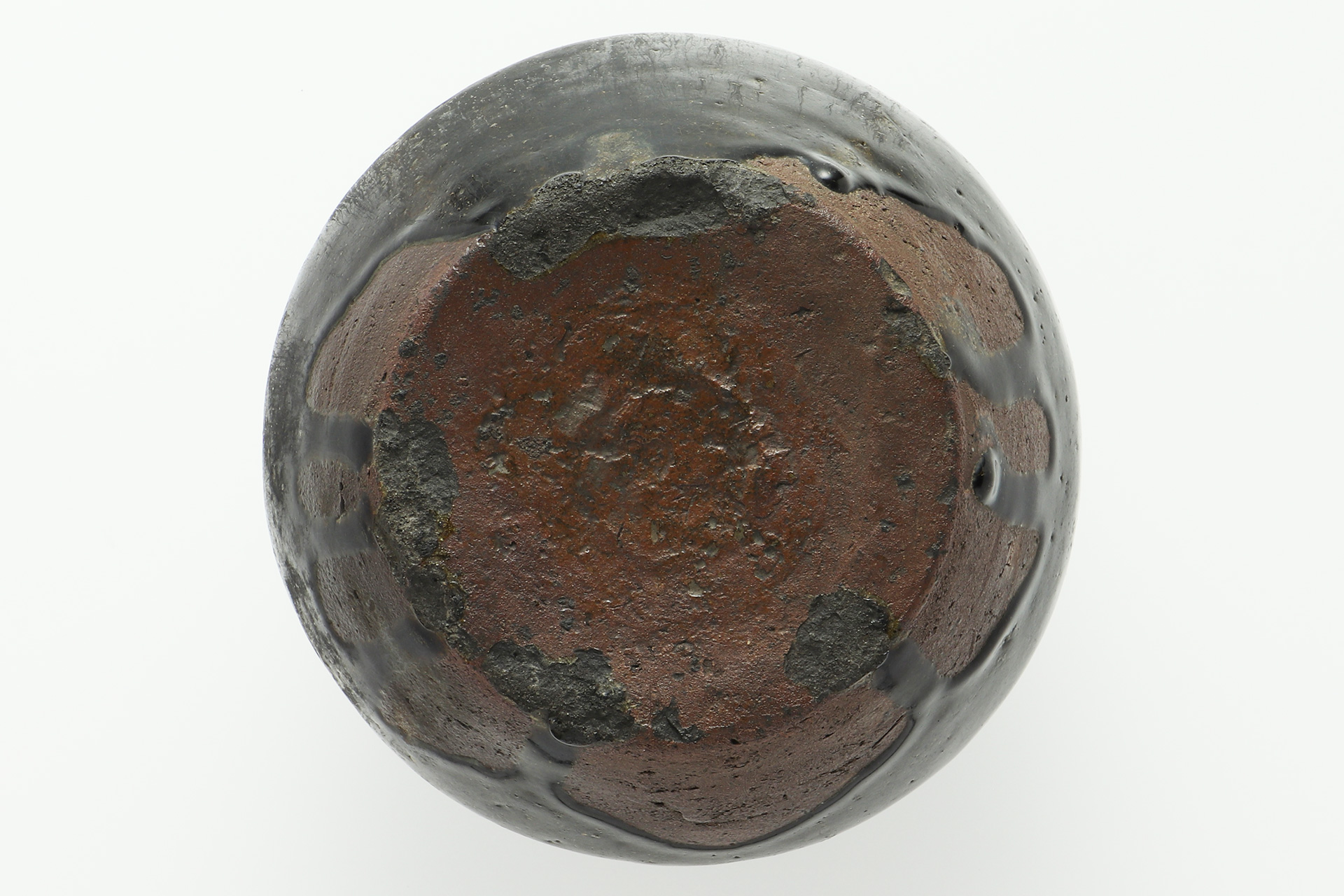
We sell and purchase Ko-Karatsu
We have a physical shop in Hakata-ku, Fukuoka City, where we sell and purchase "Ko-Karatsu" works. Drawing on a long career and rich experience in dealing, we promise to provide the finest service in the best interests of our customers. With the main goal of pleasing our customers, we will serve you with the utmost sincerity and responsibility until we close the deal.
